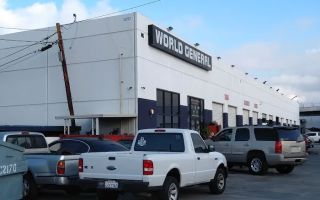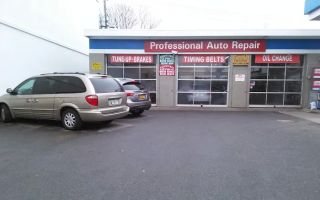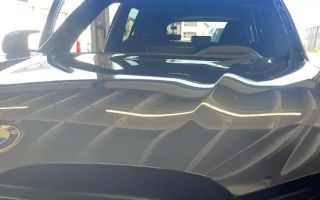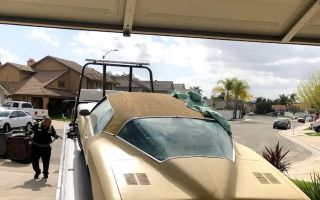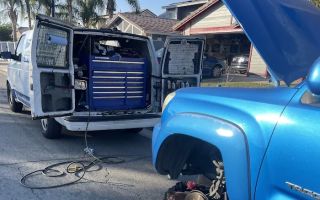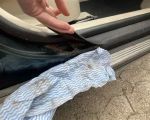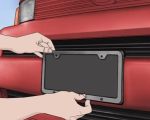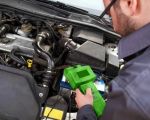- 1-What-to-Do-If-Your-Car-Dashboard-Rattles-#what-to-do-if-your-car-dashboard-rattles
- 2-Common-Reasons-for-Dashboard-Rattles-and-How-to-Fix-Them-#common-reasons-for-dashboard-rattles-and-how-to-fix-them
- 3-DIY-Tips-to-Fix-a-Rattling-Dashboard-#diy-tips-to-fix-a-rattling-dashboard
- 4-When-to-Seek-Professional-Help-for-Dashboard-Issues-#when-to-seek-professional-help-for-dashboard-issues
- 5-Preventing-Future-Dashboard-Rattles-#preventing-future-dashboard-rattles
1. What to Do If Your Car's Dashboard Rattles
Hearing an annoying rattle from your car’s dashboard can be incredibly frustrating. The sound may be subtle at first, but over time, it can become distracting and even make your driving experience unpleasant. Fortunately, a rattling dashboard is a common issue that most car owners can fix with the right knowledge and tools. In this guide, we’ll explore the causes of dashboard rattles, how to diagnose them, and practical solutions you can apply to restore peace and quiet to your vehicle.

Pick Your Part - Help Yourself
1232 Blinn Ave, Wilmington, CA 90744, USA
2. Common Reasons for Dashboard Rattles and How to Fix Them
Dashboard rattles can stem from several different sources within your vehicle. Let’s take a look at the most common causes and how you can address them.

Pick Your Part - Greer
13054 E Wade Hampton Blvd, Greer, SC 29651, USA
2.1 Loose or Broken Trim Pieces
One of the most common causes of dashboard rattles is loose or broken trim pieces. These pieces, often made of plastic, can come loose due to wear and tear, temperature changes, or rough driving. The rattling sound occurs when these parts vibrate or move against other surfaces.
How to fix it: Inspect the trim pieces on your dashboard for any signs of looseness or cracks. If you find any, try tightening the screws or replacing the damaged parts. In some cases, applying a small amount of adhesive or using double-sided tape can help hold the trim in place.
2.2 Loose Dashboard Components
Other dashboard components, such as the glove compartment, vents, or switches, can also become loose over time. If these parts aren’t properly secured, they can create rattling noises when the car is in motion.
How to fix it: Check all dashboard components for tightness. Open and close the glove compartment to ensure it’s functioning smoothly. If the vents or switches are the culprits, consider securing them with screws or adhesive strips. If the issue persists, a visit to a mechanic may be necessary to adjust or replace the faulty parts.
2.3 Vibrating Wires or Cables
Another potential cause of a rattling dashboard is vibrating wires or cables. Over time, wires under the dashboard can loosen, especially if they are not properly secured. When these wires vibrate against metal or plastic surfaces, they can produce a rattling sound.
How to fix it: Inspect the wiring under your dashboard for any loose or exposed wires. Secure any loose wires using zip ties or adhesive clips. Be sure to check the wiring around the radio, air conditioning system, and other dashboard electronics, as these areas tend to accumulate the most wiring.
2.4 Air Conditioning System Issues
Sometimes, the rattling sound may not be directly from the dashboard itself but from the air conditioning system. A faulty blower motor or loose fan can cause vibrations that resonate through the dashboard.
How to fix it: If the rattling is coming from your air conditioning system, turn off the A/C and check if the noise persists. If the noise stops, the issue is likely related to the A/C system. It’s best to have a professional inspect the blower motor and fan to ensure everything is functioning properly.
3. DIY Tips to Fix a Rattling Dashboard
While some dashboard rattles may require professional attention, there are several DIY methods you can try to fix the issue yourself. Here are some practical steps to get started:
3.1 Use Sound-Dampening Materials
If the rattle is caused by vibrations, you can reduce the noise by adding sound-dampening materials to your dashboard. These materials are designed to absorb vibrations and reduce noise transmission.
How to apply it: You can purchase sound-dampening mats or foam strips, which can be applied to the interior surfaces of your dashboard. Apply the material to areas where you’ve identified the rattling, such as the back of the trim or around loose wires.
3.2 Tighten Screws and Bolts
Loose screws and bolts are often the culprits behind a rattling dashboard. Simply tightening these components can significantly reduce or eliminate the rattling noise.
How to do it: Use a screwdriver or socket wrench to tighten any loose screws or bolts you find on your dashboard. Be careful not to overtighten, as this can damage plastic components.
3.3 Apply Silicone Lubricant
In some cases, applying a silicone-based lubricant to the moving parts of your dashboard can reduce friction and eliminate rattling noises.
How to apply it: Spray a small amount of silicone lubricant onto moving parts like vents, dials, or buttons. Be careful to avoid spraying on areas where you handle your car interior frequently, as it can leave a residue.
4. When to Seek Professional Help for Dashboard Issues
Although many rattling issues can be fixed with DIY methods, there are times when professional help is necessary. If the rattling persists after you’ve tried these fixes, it may indicate a deeper issue with the dashboard structure or a problem with the vehicle’s internal systems.
When to seek help: If the noise is coming from the air conditioning system, a malfunctioning blower motor, or if you’re unable to pinpoint the source of the rattle, it’s time to consult a mechanic. A professional will be able to accurately diagnose the issue and perform any necessary repairs to restore your dashboard’s quiet operation.
If you need assistance with fixing dashboard issues or other car-related problems, you can visit Rescue & Towing for reliable services and expert advice on vehicle maintenance.
5. Preventing Future Dashboard Rattles
Once you’ve resolved your dashboard rattle, it’s important to take steps to prevent future issues. Regular maintenance, including checking the tightness of screws, inspecting trim pieces, and cleaning out any debris, can help keep your dashboard quiet for years to come.
Tips for prevention:
- Regularly inspect the interior components of your car for signs of wear and tear.
- Use soft cloths or padding to protect the dashboard from scratches or cracks.
- Address minor issues before they turn into bigger problems, such as loose parts or broken components.
With a little care and attention, you can enjoy a rattle-free driving experience.



